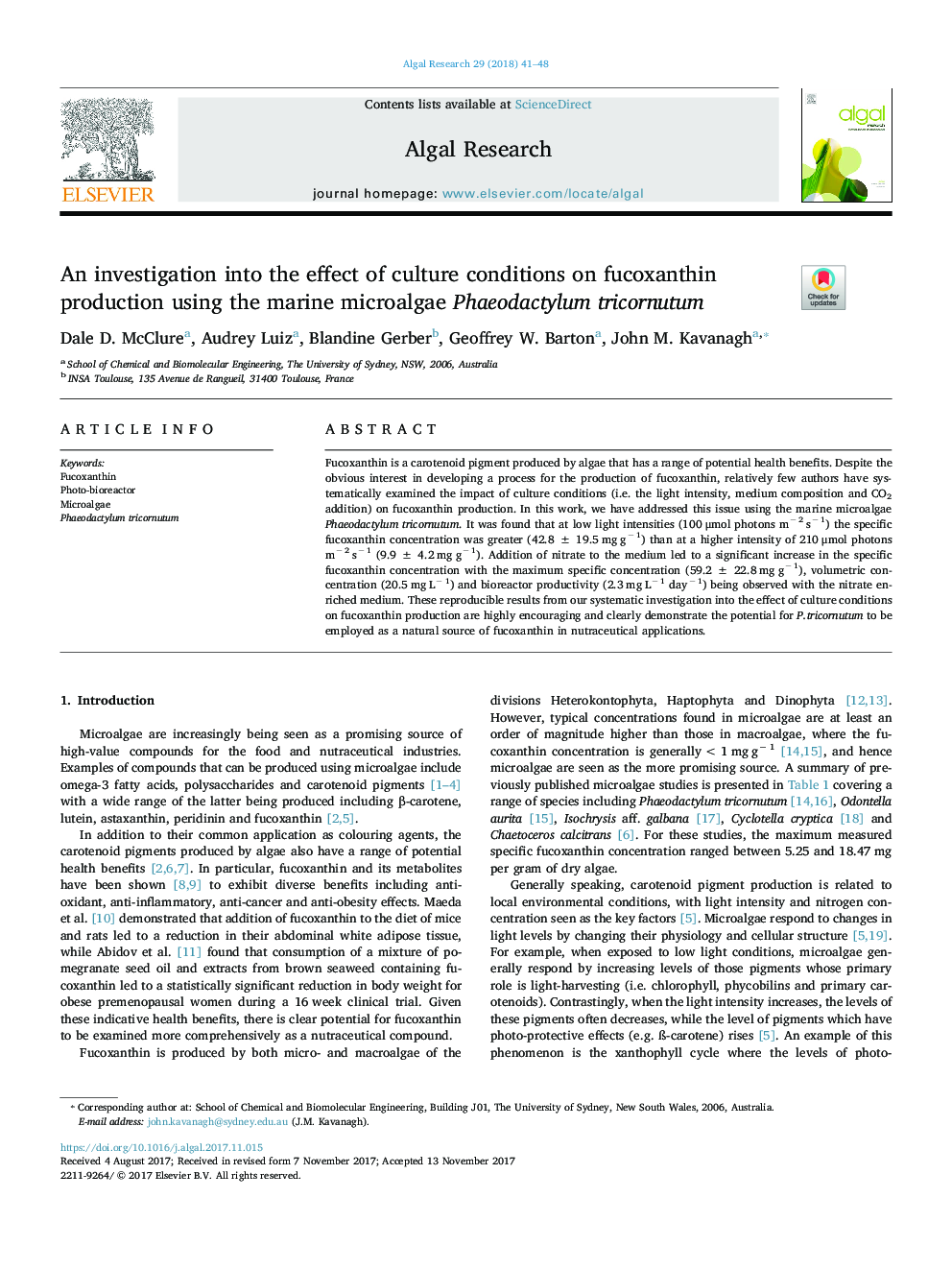| Article ID | Journal | Published Year | Pages | File Type |
|---|---|---|---|---|
| 8086201 | Algal Research | 2018 | 8 Pages |
Abstract
Fucoxanthin is a carotenoid pigment produced by algae that has a range of potential health benefits. Despite the obvious interest in developing a process for the production of fucoxanthin, relatively few authors have systematically examined the impact of culture conditions (i.e. the light intensity, medium composition and CO2 addition) on fucoxanthin production. In this work, we have addressed this issue using the marine microalgae Phaeodactylum tricornutum. It was found that at low light intensities (100 μmol photons mâ 2 sâ 1) the specific fucoxanthin concentration was greater (42.8 ± 19.5 mg gâ 1) than at a higher intensity of 210 μmol photons mâ 2 sâ 1 (9.9 ± 4.2 mg gâ 1). Addition of nitrate to the medium led to a significant increase in the specific fucoxanthin concentration with the maximum specific concentration (59.2 ± 22.8 mg gâ 1), volumetric concentration (20.5 mg Lâ 1) and bioreactor productivity (2.3 mg Lâ 1 dayâ 1) being observed with the nitrate enriched medium. These reproducible results from our systematic investigation into the effect of culture conditions on fucoxanthin production are highly encouraging and clearly demonstrate the potential for P.tricornutum to be employed as a natural source of fucoxanthin in nutraceutical applications.
Related Topics
Physical Sciences and Engineering
Energy
Renewable Energy, Sustainability and the Environment
Authors
Dale D. McClure, Audrey Luiz, Blandine Gerber, Geoffrey W. Barton, John M. Kavanagh,
